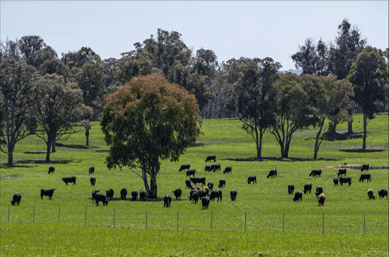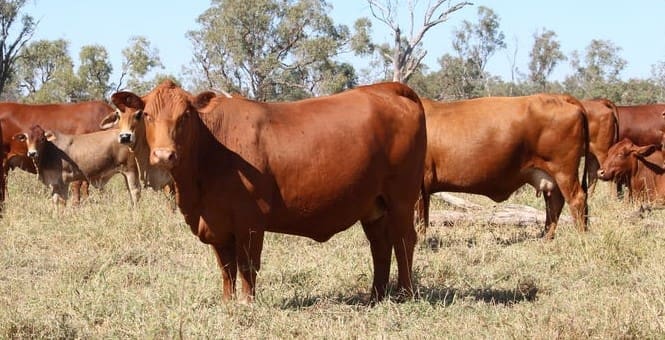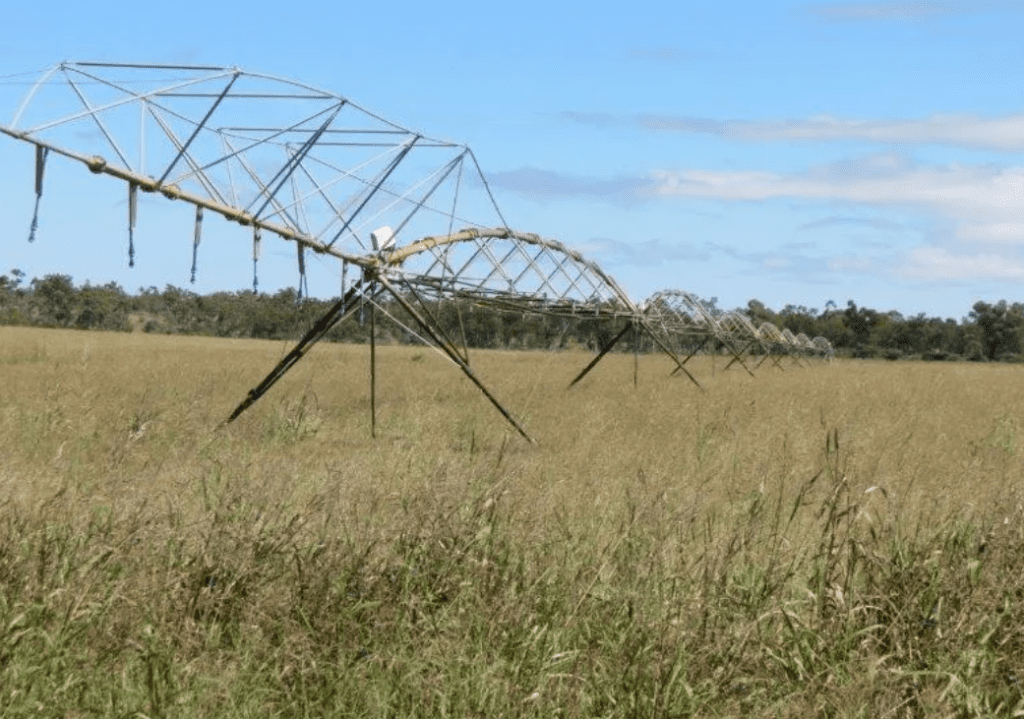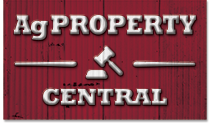THIS week’s property review includes this wrap up of recently completed sales, and a separate article on interesting recent listings across the country.
- Dubbo investor secures northern NSW country for around $12m
- Syndicate pays $14.4m for NSW’s Bullarora
- $8.3m for high rainfall southern NSW grazing
- Neighbours secure Dysart’s Highland Plains & Mt Walker
- Undisclosed buyer pays $6m+ for Qld’s Thargomindah
- Prized Darling River frontage country makes $6m
- NSW Western Division country purchased for carbon & grazing
- Neighbours secure NQ’s cattle + fodder block

Cattle on Northcotte, located near Woolomin, 30km from Tamworth and 20km from Nundle
Dubbo investor secures northern NSW country for around $12m
A Dubbo investor has paid around $12 million bare for northern New South Wales grazing and farming country owned by Agforce president Georgie Somerset.
The 1606ha Northcotte, pictured above, is located near Woolomin, 30km from Tamworth and less than 20km from Nundle, in a scenic location near Chaffey Dam.
The grazing enterprise has an estimated carrying capacity of 9100 dry sheep equivalents, but is currently running 400 Angus cows, as well as trade steers.
Benefitting from an annual average 780mm of rain, Northcotte features mostly black and red basalt soils with 220ha of productive irrigated Peel River flats growing lucerne and cereal hay.
Northcotte fronts the Peel River and Copes Creek and is watered by three equipped groundwater bores reticulating water to four 100,000 litre tanks and 40 concrete troughs.
Water allocations include 229 megalitres from the Peel River Regulated Water Source.
Georgie Somerset and her family will now focus on their Durong properties in Queensland’s South Burnett region.
LAWD agent Simon Cudmore handled the sale.
Syndicate pays $14.4m for NSW’s Bullarora
A syndicate of neighbours has secured a livestock breeding, finishing and cropping operation in the central-west region of New South Wales for around $14.4 million or $2842/ha bare.
The 5069ha Bullarora is situated 70km north of Coonamble and once formed part of the Wingadee Station.
Renowned for its year-round production of sheep, wool, lambs and cattle, Bullarora has been running 400 sheep on summer grasses, winter clovers, medics and herbages.
In season, vendors Michael and Libby Kennedy have been agisting up to 2000 mixed cattle in addition to their own livestock.
The level open country has never been farmed, however its grey and black self-mulching soils to red and grey clay loams are ideal for cereal cropping.
Bullarora is watered by ten dams and capped and uncapped bores that service 12km of bore drains, as well as tanks and troughs.
It is well fenced with 12 main paddocks and offers the incoming purchaser carbon farming development potential.
Improvements include a four-bedroom home, machinery shed, workshop, four-stand electric shearing shed and sheep and cattle yards.
Elders agent Richard Gemmell handled the sale.
$8.3m for high rainfall southern NSW grazing
A New South Wales investor has paid $8.3 million bare ($3538/ha) for a productive grazing operation in the state’s highly regarded, high rainfall south-west slopes region.
Situated 8km south-east of Tarcutta and 53km from Wagga Wagga, the 2346ha Green Valley is rated to run around 500 cows or 10,000 DSE.
Located in a temperate climate, Green Valley enjoys an average annual rainfall of around 744mm.
The country is described as a good balance of highly fertile creek flats rising to open sheltered valleys and timbered ridges.
The property features double frontage to three permanent local creeks, and multiple spring-fed dams.
Part of Green Valley had been owned by members of the McAllister family since the 1930s. Its current owners, brothers Pat and Lachie, are now retiring.
Sally Douglas from Nutrien Harcourts handled the sale.

The New England production powerhouse Green Valley
Neighbours secure Dysart’s Highland Plains & Mt Walker
Phil and Deborah Reid have paid $7.4 million for adjoining premium Dysart district cattle breeding and finishing country in Queensland’s Central Highlands.
The 2047ha Highland Plains is located 24km south-west of Dysart, 60km east of Clermont and 110km north-east of Emerald.
The Reids own Paringa feedlot near Capella, 90km north of Emerald.
RBV agent Terry Ray, who handled the auction, said the sale included a small amount of plant and equipment.
“The purchase of Highland Plains will complement the Reid’s existing backgrounding country, allowing them to have more cattle ready to go onto feed.”
The country on Highland Plains is mostly open to semi open deep, black, self-mulching soils that have been farmed in the past and could grow forage or grain crops.
The remainder features mountain coolibah and loamy box ridges and coolibah and ti-tree creek flats.
Situated in a 575mm average rainfall region, Highland Plains is heavily grassed and abundantly watered by ten dams and five bores.
Recent improvements have focused on ease of management.
During their 35-year ownership, the Pocock family focussed on breeding and finishing between 500 to 550 head of cattle.

The 2047ha Highland Plains is located 24km south-west of Dysart and 60km east of Clermont
Mt Walker
Graham and Kerrie Garside and family will expand their grazing operation after paying $5.15 million for a neighbouring mixed farm in Central Queensland.
Mt Walker is situated at the base of the Huntley Range, 38km west of Dysart and halfway between Clermont and Capella.
RBV Rural agent Matt Beard said the outstanding result included 180ha of chickpeas and more than 80ha of wheat.
“Mt Walker is a lovely piece of country that is well improved and in a desirable location. The safe mix of versatile country allows for a multitude of farming options including cereal cropping, paddock subdivision and installing more watering points,” he said.
Of the 1179ha, around 275ha are arable. The fertile, heavy black soils are benefitting from a good seasonal start, with a good range of depth.
The balance of country, which is used for grazing, is carrying a large body of feed including buffel and Mitchell grasses.
Located in a reliable rainfall area, Mt Walker is watered by three bores and two dams.
The infrastructure includes a three-bedroom home and a number of sheds.
Undisclosed buyer pays $6m+ for Qld’s Thargomindah
Thargomindah Station in south-west Queensland has sold at auction for $6.1 million (including 500 cows and progeny) to a Brisbane-based advisor on behalf of a client.
Andrew Adcock from Adcock Partners Property and Livestock was unable to disclose the name of the buyer, but said it was secured by a third party bid on the purchaser’s behalf.
The 47,100ha holding is adjacent to the Thargomindah township and is suitable for running cattle, sheep or goats.
Thargomindah Station is currently being run as a cattle enterprise, but in the past was a sheep and wool operation.
The mostly flat to gently undulating open grasslands are timbered with mulga, box and beefwood and are fully exclusion fenced.
There is around 5600ha of Bulloo River frontage and flood-out, supported by a capped share bore and two wells.
Prized Darling River frontage country makes $6m
Darren and Melita Turner from Ivanhoe have paid more than $6 million bare for prized Darling River frontage country in New South Wales’ far west, ending almost 20 years ownership by the Parker family.
Suited to both sheep and cattle, the 27,526ha Boolkamena Station is located 70km north of Menindee and 150km south-east of Broken Hill.
Troy Hartman from Nutrien Harcourts believes the price paid was a district record.
The Turners will run cattle and Dorpers on Boolkamena in conjunction with their other properties in Ivanhoe and Victoria.
Boasting significant Darling River frontage and access, water is also secured by two bores and distributed by significant pipelines to all paddocks.
Boolkamena features productive and versatile land systems, including flood-out areas, open fertile plains, stretches of red sandy rises, box swamps and an open tableland growing a significant body of feed.
It is estimated to run 6000 ewes and 200 cows with progeny or 7077 stock units.
NSW Western Division country purchased for carbon & grazing
A well improved New South Wales Western Division grazing operation has sold after auction to a party interested in grazing and carbon opportunities.
The 35,446ha Avondale, that once formed part of the Dunlop Aggregation, is located 90km north-west of Louth and 190km west of Bourke.
Greg Seiler from Nutrien Harcourts Bourke said the property was passed in at auction but sold shortly afterwards to an undisclosed buyer for a price in line with market expectations.
The sale ends 21 years of ownership by the Ponder family.
The soft country on Avondale is suited to sheep or goat breeding and finishing, with the ability to also run cattle.
Avondale is a natural haven for rangeland goats and has a history of mustering large numbers. It comes with a local land services rating of 8775DSE.
In addition to running sheep and goats, the property generates a significant income stream from a human induced regeneration (HIR) carbon project that has 25 years to run.
Areas of flood-out country from the Utah Lake and Kerribree Creek systems are interspersed with soft rolling red sandhills and flats growing a large body of native grasses, herbages and salines in season.
The western portion of the property has areas of open mulga grassland, shrubs and bush.
Avondale is well watered by nine bores and 14 of the 18 water enclosures are trapped.
Improvements include a three-bedroom home, a worker’s cottage, a machinery shed, a six-stand shearing shed, sheep and cattle yards.

The 35,446ha Avondale is located 90km north-west of Louth and 190km west of Bourke.
Neighbours secure NQ’s cattle + fodder block
North Queensland’s Peter and Sue Hammer, Anavale, have secured the neighbouring property Basalt for $4.8 million.
Henry Slaney from Slaney & Co said the auction was contested by five registered bidders – local and away.
The 566ha Basalt is 25km from Charters Towers, close to the Lynd Highway, and 150km north-west of Townsville.
It is one of the few irrigation farms in the Upper Burdekin and grows Rhodes grass hay and runs 100 mixed cattle, with 40 mixed weaners (200 to 300kg) included in the sale.
Situated in a 650mm average annual rainfall region, it features a mix of fertile black and red basalt and alluvial Burdekin River frontage soils, well drained farming land and significant irrigation water.
Basalt farm has 5km of Burdekin River frontage and a 2400ML water entitlement. Construction of the proposed Big Rocks Weir will mean additional, reliable water supply.

Basalt farm has 5km of Burdekin River frontage and a 2400ML water entitlement.
